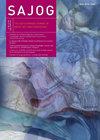Factors associated with maternal delays in utilising emergency obstetric care in Arsi Zone, Ethiopia
IF 0.4
Q4 OBSTETRICS & GYNECOLOGY
引用次数: 9
Abstract
Background. Delay to timely healthcare contributes to high maternal mortality and morbidity in developing countries. The so-called ‘Three delays’ model has been used extensively to investigate factors relating to maternal mortality. Objective. To investigate factors associated with delayed emergency obstetric care in Arsi Zone, Ethiopia. Methods. A cross-sectional study was conducted across 10 public health facilities in Arsi Zone, Ethiopia. The required sample size was calculated as 847, with the number of participants required at each facility determined proportionally. Results. Data from 775 respondents were used in the analysis. Approximately a quarter of respondents ( n =203; 26.2%) reported a delayed decision to seek emergency obstetric care. The mean time for delay was 90 minutes (range 30 minutes - 18 hours). Maternal age, educational level, monthly household income and antenatal visits were significant predictors of this first maternal delay. Close to a third of the respondents ( n =234; 30.2%) reported a transport-related delay in reaching a healthcare facility; some respondents walked at least 30 minutes to reach the facility. Approximately a quarter of respondents ( n =198; 25.5%) reported that they did not receive timely care after arriving at the healthcare facility. The mean delay was 42.3 minutes. Conclusion. The most common delay was related to difficulty in reaching the healthcare facility. In approximately half of the cases, the woman’s husband took the decision to access medical care. This suggests limited independent decision-making power of women in this context. Such factors should be considered in efforts to reduce maternal morbidity and mortality.埃塞俄比亚阿尔西地区产妇延迟使用产科急诊的相关因素
背景延迟及时提供医疗保健导致发展中国家产妇死亡率和发病率居高不下。所谓的“三延迟”模型已被广泛用于调查与孕产妇死亡率相关的因素。目标。调查埃塞俄比亚阿尔西地区产科急诊延误的相关因素。方法。对埃塞俄比亚阿尔西地区的10个公共卫生设施进行了横断面研究。所需的样本量计算为847人,每个设施所需的参与者人数按比例确定。结果。分析中使用了775名受访者的数据。大约四分之一的受访者(n=203;26.2%)报告称,寻求产科急诊的决定被推迟。平均延迟时间为90分钟(范围为30分钟-18小时)。产妇年龄、教育水平、每月家庭收入和产前检查是第一次产妇延迟的重要预测因素。近三分之一的受访者(n=234;30.2%)报告称,在到达医疗机构时出现了与交通相关的延误;一些受访者步行至少30分钟到达该设施。大约四分之一的受访者(n=198;25.5%)表示,他们在到达医疗机构后没有得到及时的护理。平均延迟42.3分钟。结论。最常见的延误与难以到达医疗机构有关。在大约一半的病例中,妇女的丈夫决定获得医疗服务。这表明妇女在这方面的独立决策权有限。在努力降低孕产妇发病率和死亡率时,应考虑到这些因素。
本文章由计算机程序翻译,如有差异,请以英文原文为准。
求助全文
约1分钟内获得全文
求助全文
来源期刊

South African Journal of Obstetrics and Gynaecology
Medicine-Obstetrics and Gynecology
CiteScore
0.40
自引率
0.00%
发文量
5
审稿时长
15 weeks
期刊介绍:
The SAJOG is a tri-annual, general specialist obstetrics and gynaecology journal that publishes original, peer-reviewed work in all areas of obstetrics and gynaecology, including contraception, urogynaecology, fertility, oncology and clinical practice. The journal carries original research articles, editorials, clinical practice, personal opinion, South Africa health-related news, obituaries and general correspondence.
 求助内容:
求助内容: 应助结果提醒方式:
应助结果提醒方式:


